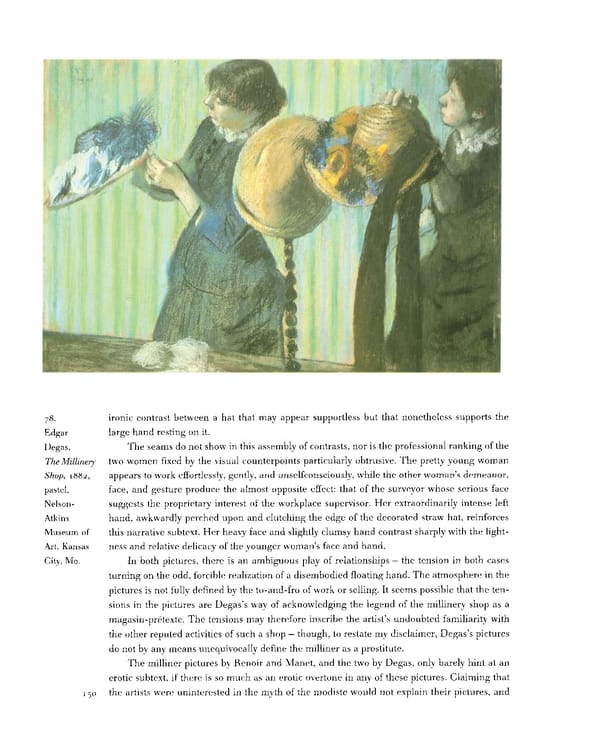78. ironic contrast between a hat that may appear supportless but that nonetheless supports the Edgar large hand resting on it. Degas, The seams do not show in this assembly of contrasts, nor is the professional ranking of the The Millinery two women fixed by the visual counterpoints particularly obtrusive. The pretty young woman Shop, 1882, appears to work effortlessly, gently, and unselfconsciously, while the other woman's demeanor, pastel, face, and gesture produce the almost opposite effect: that of the surveyor whose serious face Nelson- suggests the proprietary interest of the workplace supervisor. Her extraordinarily intense left Atkins hand, awkwardly perched upon and clutching the edge of the decorated straw hat, reinforces Museum of this narrative subtext. Her heavy face and slightly clumsy hand contrast sharply with the light- Art, Kansas ness and relative delicacy of the younger woman's face and hand. City, Mo. In both pictures, there is an ambiguous play of relationships - the tension in both cases turning on the odd, forcible realization of a disembodied floating hand. The atmosphere in the pictures is not fully defined by the to-and-fro of work or selling. It seems possible that the ten- sions in the pictures are Degas's way of acknowledging the legend of the millinery shop as a magasin-pretexte. The tensions may therefore inscribe the artist's undoubted familiarity with the other reputed activities of such a shop - though, to restate my disclaimer, Degas's pictures do not by any means unequivocally define the milliner as a prostitute. The milliner pictures by Renoir and Manet, and the two by Degas, only barely hint at an erotic subtext, if there is so much as an erotic overtone in any of these pictures. Claiming that 150 the artists were uninterested in the myth of the modiste would not explain their pictures, and
 Prostitution & Impressionists Page 150 Page 152
Prostitution & Impressionists Page 150 Page 152